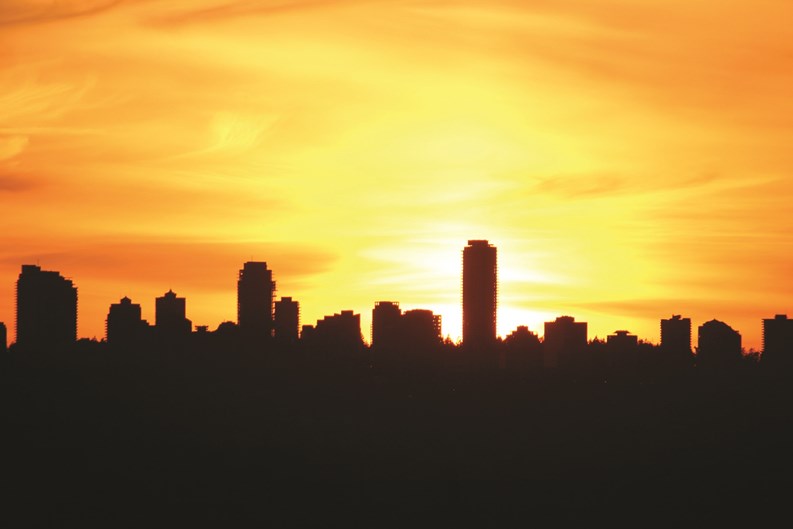There will always be those who insist that if they can’t live in Manhattan, they would rather not live in New York City at all. They feel that Manhattan is the one true New York and that the outer boroughs are remote hinterlands barely fit for human habitation.
These people have never visited Park Slope.
Nudging up under the south side of Prospect Park, an average of four subway stops into Brooklyn, Park Slope has become one of the few "new" fashionable neighborhoods to escape being labeled with a clever acronym. (At least for now, no one’s rushing to start calling it "ParSlo" or "PaSlop.") Here, students live in brownstone row houses alongside young families just starting out, wealthy professionals escaping the crush and noise of Manhattan, and elderly residents who’ve been in "The Slope" all their lives. On any given Saturday morning, 7th Avenue buzzes with activity: Baseball-capped moms push state-of-the-art strollers, couples sip chai in one of a half-dozen cozy coffee shops, and dogs give each other the eye as their owners pause to chat. Park Slope is enjoying a renaissance of sorts. It’s convenient, desirable, attractive, and (compared to Manhattan) affordable.
But this has not always been–and may not always be – the case.
The Evolution of a Neighborhood
Before the the Brooklyn Bridge was built in 1883, the area that was to become Park Slope was accessible from Manhattan only by ferry, making it largely the domain of farmers and wealthy landowners keen on elbow room. One of the latter was lawyer and railroad magnate Edwin C. Litchfield, who owned all of what eventually became Prospect Park. The City purchased the 526 acres for the park from the Litchfield family in the 1860s and today uses the Litchfield Manor as headquarters for the Brooklyn Parks Department. The creation of Prospect Park gave the neighborhood an anchor, and the presence of established, wealthy families like the Litchfields made Park Slope a fashionable place for the very wealthy to build and live.
Construction of the Brooklyn Bridge enabled goods and people to pass back and forth with greater ease and less expense, and by the end of the 19th century, the U.S. Census Bureau reported that Park Slope residents had the highest per capita income in the nation. The ornate limestone and brownstone façades of Park Slope are a testament to the attention the Victorian Brooklynites paid to detail and luxury – and to the money they were willing to spend for both.
Rich and prosperous as Park Slope was in its turn-of-the-century incarnation, the neighborhood was not immune to the pressures of global conflict and economic downturn. The Great Depression forced all but the super-rich to scale back their lifestyles, and many of the wealthy homeowners in Park Slope sold their properties and cleared out. The landlords who bought the formerly-grand homes either tore them down or converted them into tenement houses, which attracted a variety of new residents. Most of these new tenants were recent immigrants from Europe; others were African-Americans from the Deep South, or Hispanic families.
As the ethnic tint of the neighborhood began to change, Park Slope lost some of its "social desirability" in the eyes of the remaining wealthy residents. According to Anna Hamlin of William B. May’s Brooklyn office, "Even if Park Slope was still essentially a wealthy neighborhood [prior to WWII], it had lost some of its glamour."
As more poor and working-class people settled in the area, the last of the wealth that had made Park Slope such a grand place to live at the turn of the century began to drift away, and The Slope began to acquire a reputation for being a tough neighborhood. By the time World War II ended, the area had gone from being "Brooklyn’s Gold Coast" to being a sprawling township of neglected tenements and moldering row-houses. The conflicts in Europe and the proximity of the Brooklyn Naval Yards added up to a largely new and often transient population, and poverty and crime began to erode the neighborhood.
Renaissance and Rent-Hikes
It was not until the late 50s and early 60s that Park Slope began to creep back into fashion. The area’s return to prominence was due largely to young professionals – teachers, doctors, lawyers – and their families moving back and, according to Hamlin, "re-legitimizing Park Slope as a place to grow up."
These re-planted Park Slope transplants bought the brownstones and row houses that their parents and grandparents had abandoned and refurbished them with their own hands, restoring them to their former glory. Businesses followed where these self-styled urban pioneers had gone, and by the mid-to-late 60s, a full-fledged renaissance was under way in The Slope.
That renewal has continued into the 21st century unabated; today, Park Slope is again edging toward being a neighborhood for the rich. The returning professionals-cum-handymen have been selling the properties they worked so hard to resuscitate and making millions on the sales. Everyone wants to live in Park Slope, and prices reflect the demand. Joseph Berman of Joseph Berman Realty, Inc. in Park Slope estimates that one-third of Park Slope’s residential market is co-ops and condos, with co-ops predominating. "And an ‘average’ market price covers a wide range," says Berman. "If you’re talking about a small one-bedroom, say a half-story in a brownstone, 450 to 500 square feet, you can expect to pay somewhere from $175,000 to $200,000. If you want a full floor, it’s more like $350,000 to $375,000."
According to Steve Rutter of The Corcoran Group’s Park Slope office, the selling prices in Park Slope have more than doubled since 1995. Even one-bedroom properties are hard to find for under $150,000. "A two-bedroom condo that sold for $500,000 to $600,000 even in 1995 goes for a million and a half now," Rutter says. And the numbers go up from there, "particularly if you’re talking about brownstones."
Despite The Slope’s current vogue, there are only about a dozen elevated co-ops in the neighborhood, and no plans for any major conversions in the works. There are, however, three substantial condo construction projects underway; two on 1st and 2nd Streets between 4th and 5th Avenues, and another on Union Street between 8th Avenue and Prospect Park West. All told, these new buildings will add about 100 new condo units to the market within the next 18 months and draw another small wave of newcomers to the area.
Brooklyn’s "Cultural Hub"
With the regular infusion of new money, Park Slope has become not only a fashionable neighborhood, but a cultural center as well. "It’s Brooklyn’s cultural hub," says Rutter. "You don’t have to go to the Angelika [theater in SoHo] to see a foreign film anymore." That development is thanks to the Brooklyn Academy of Music’s new Rose Theaters, which offer Park Slope and surrounding area residents a place to see film and performing arts events practically in their backyards.
Rutter also points out the overwhelming popularity of the annual Celebrate Brooklyn! Performing Art Festival as an indicator of Park Slope’s vitality. "And," he says, "the Park itself is a huge draw."
He’s right. Not only is Park Slope an option for people unable (or simply unwilling) to pay what is asked for comparable properties in Manhattan, but the neighborhood has begun drawing families who could afford to live in Manhattan, but who instead have chosen to live and raise their children in the relative quiet of The Slope.
It will be interesting to watch how this second reversal of Park Slope’s fortunes will change the face of the neighborhood. Stephen Levinson, 28, has lived in The Slope for over five years, and has watched some of the more recent changes from the inside. "The boundaries of ‘hip’ Park Slope have definitely expanded," Levinson says. "Friends of mine are getting apartments past 14th Street, into the 20s, and the 5th Avenue border is kind of getting fuzzy."
From a purely urban-renewal perspective, things could hardly be better in Park Slope. Levinson recalls what the now-thriving 5th Avenue strip looked like when he moved to the area. "There were a lot of dusty, run-down old antiques shops when I moved in. Less than a year later, the whole street was full of vintage clothing and record stores and some pretty good restaurants. There are more young people in the area, too. Five years ago, I was the youngest person in my building."
As more and more affluent people choose to settle in the area, however, long-time residents and those wishing to live here for The Slope’s relative affordability may find themselves pushed out of the market by prices beyond their means. Building owners anxious to sell high may not have their tenants’ best interests at heart when it comes to the bottom line, and many people whose families carved out lives for themselves in the wake of the first "white flight" from the area may be forced to take their business elsewhere. Says one Slope resident, "You can just see the borders of the "acceptable" blocks expanding. When I moved in, one of my neighbors told me that five or six years ago, she’d wake up to the sound of gunfire in the middle of the night, and now just one block down from my place there are professional families with dogs and SUVs sending their kids off to school in the morning without a second thought."
As The Slope morphs yet again, of interest and concern to some is the neighborhood’s increasing homogeneity. Though many residents insist that one of the charms of the area is its broad spectrum of cultural and ethnic diversity, the heart of Park Slope has become largely the domain of upper-middle class white families, Peruvian and Thai restaurants notwithstanding. A substantial number of residents feel that there are a few too many bankers nesting in The Slope and not enough "real people."
Is Brooklyn headed the way of Manhattan, with gentrification run rampant and alternating Gaps and Starbucks on every corner? Will people soon look back fondly on the days when a three-bedroom condo in Park Slope could be had for under a million dollars? Or will the economy take the city for another ride and level the playing field again? Only time will tell–and Park Slope has proven it can survive the wait.
Ms. Fons is associate editor of The Cooperator.





Leave a Comment